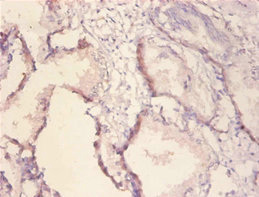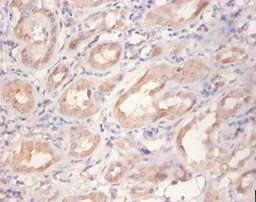Full Product Name
Rabbit anti-Homo sapiens (Human) ERBB2 Polyclonal antibody
Alternative Names
Verb b2 erythroblastic leukemia viral oncogene homolog 2, neuro/glioblastoma derived oncogene homolog antibody; C erb B2/neu protein antibody; CD340 antibody; CD340 antigen antibody; Cerb B2/neu protein antibody; CerbB2 antibody; Erb b2 receptor tyrosine kinase 2 antibody; ErbB-2 proto-oncogene antibody; ERBB2 antibody; ERBB2_HUMAN antibody; HER 2 antibody; HER 2/NEU antibody; HER2 antibody; Herstatin antibody; Human epidermal growth factor receptor 2 antibody; Metastatic lymph node gene 19 protein antibody; MLN 19 antibody; MLN19 antibody; NEU antibody; NEU proto oncogene antibody; Neuro/glioblastoma derived oncogene homolog antibody; Neuroblastoma/glioblastoma derived oncogene homolog antibody; NGL antibody; p185erbB2 antibody; Proto-oncogene c-ErbB-2 antibody; Proto-oncogene Neu antibody; Receptor tyrosine-protein kinase erbB-2 antibody; TKR1 antibody; Tyrosine kinase type cell surface receptor HER2 antibody; Tyrosine kinase-type cell surface receptor HER2 antibody; V erb b2 avian erythroblastic leukemia viral oncogene homolog 2 (neuro/glioblastoma derived oncogene homolog) antibody; V erb b2 avian erythroblastic leukemia viral oncogene homolog 2 antibody; V erb b2 avian erythroblastic leukemia viral oncoprotein 2 antibody; V erb b2 erythroblastic leukemia viral oncogene homolog 2, neuro/glioblastoma derived oncogene homolog (avian) antibody; V erb b2 erythroblastic leukemia viral oncogene homolog 2, neuro/glioblastoma derived oncogene homolog antibody; Verb b2 erythroblastic leukemia viral oncogene homolog 2, neuro/glioblastoma derived oncogene homolog (avian) antibody
Immunogen
Recombinant Human Receptor tyrosine-protein kinase erbB-2 protein (153-598AA)
Immunogen Species
Homo sapiens (Human)
Conjugate
Non-conjugated
The ERBB2 Antibody (Product code: CSB-PA09759A0Rb) is Non-conjugated. For ERBB2 Antibody with conjugates, please check the following table.
Available Conjugates
| Conjugate |
Product Code |
Product Name |
Application |
| HRP |
CSB-PA09759B0Rb |
ERBB2 Antibody, HRP conjugated |
ELISA |
| FITC |
CSB-PA09759C0Rb |
ERBB2 Antibody, FITC conjugated |
|
| Biotin |
CSB-PA09759D0Rb |
ERBB2 Antibody, Biotin conjugated |
ELISA |
Purification Method
>95%, Protein G purified
Concentration
It differs from different batches. Please contact us to confirm it.
Buffer
Preservative: 0.03% Proclin 300
Constituents: 50% Glycerol, 0.01M PBS, PH 7.4
Tested Applications
ELISA, IHC
Recommended Dilution
| Application |
Recommended Dilution |
| IHC |
1:20-1:200 |
Storage
Upon receipt, store at -20°C or -80°C. Avoid repeated freeze.
Lead Time
Basically, we can dispatch the products out in 1-3 working days after receiving your orders. Delivery time maybe differs from different purchasing way or location, please kindly consult your local distributors for specific delivery time.
Usage
For Research Use Only. Not for use in diagnostic or therapeutic procedures.








